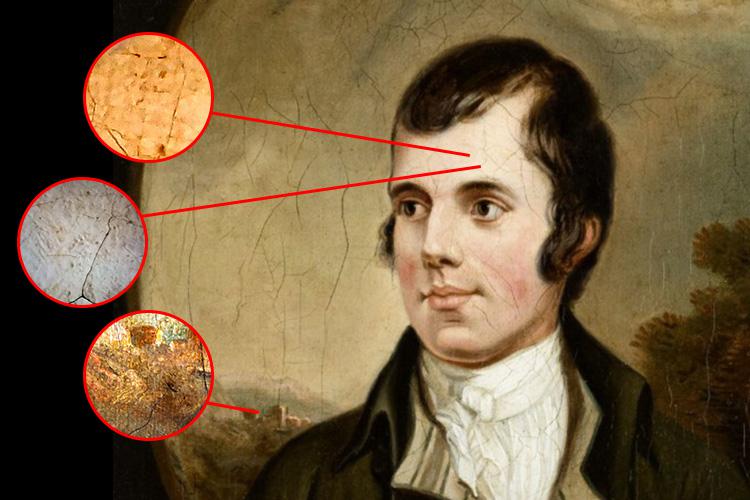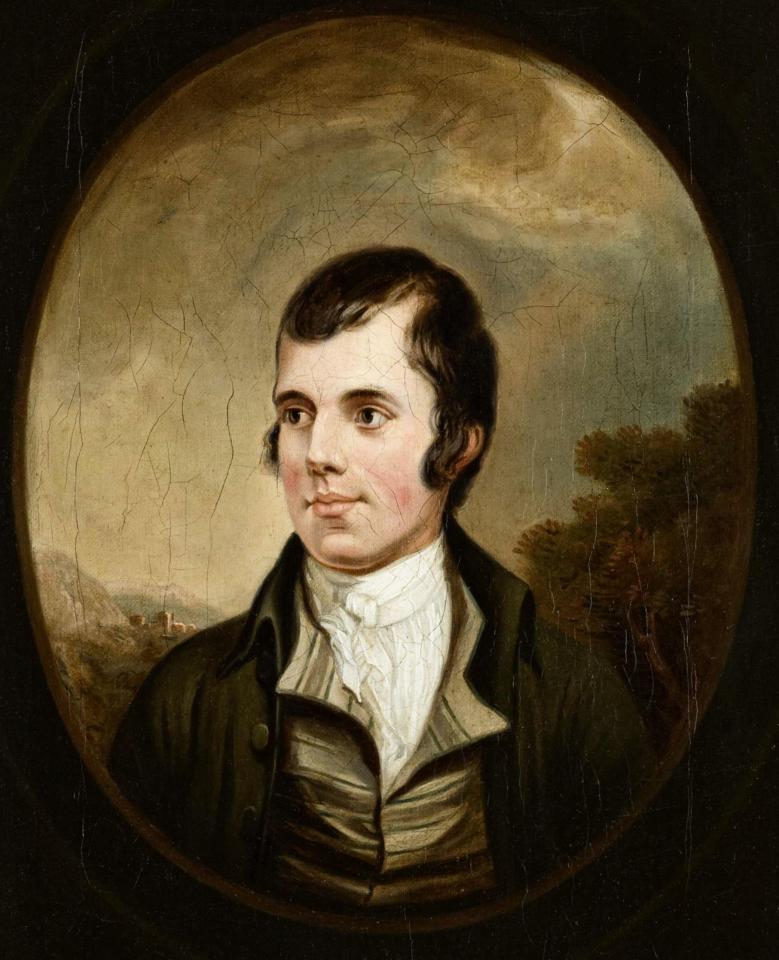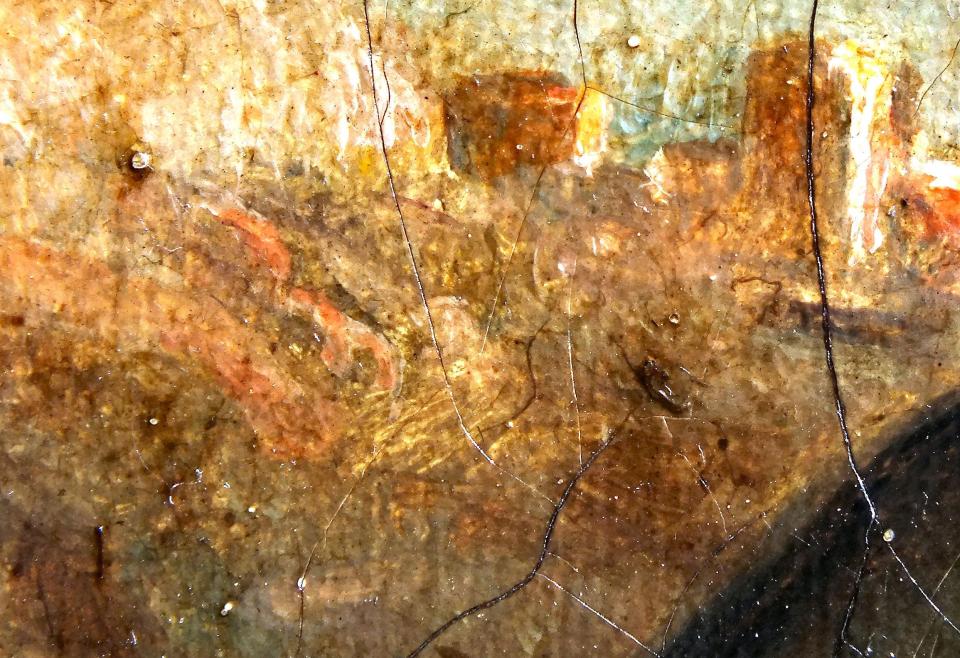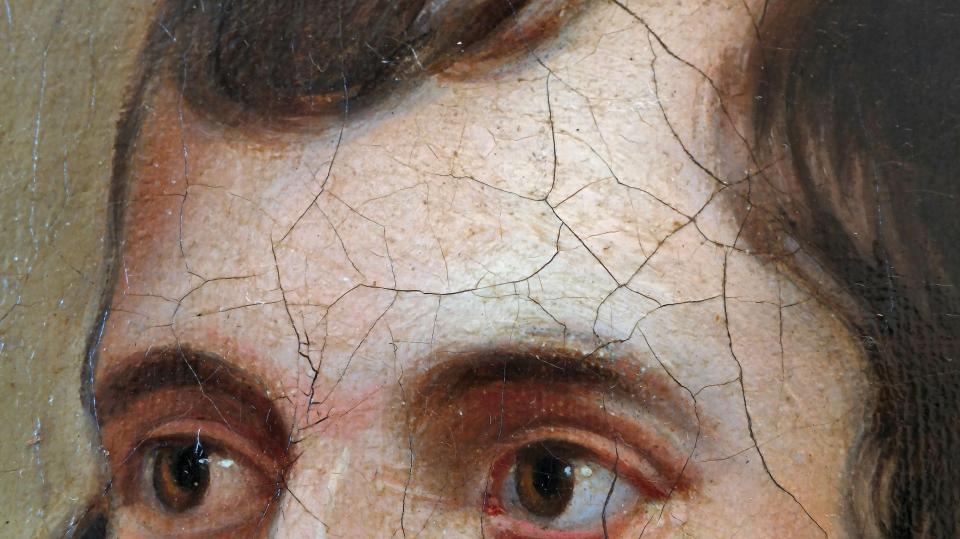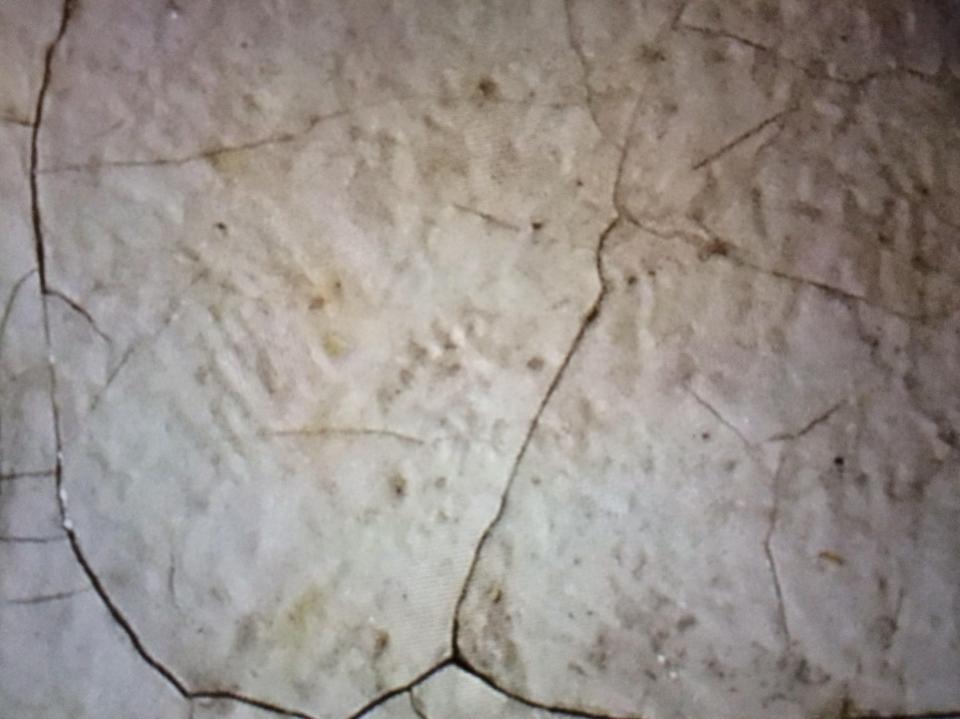This mysterious painting of Robbie Burns contains tiny secret Masonic symbols, researcher claims
Stunning portrait of the poet thought to be hiding a secret that's gone unnoticed for 230 years

A series of Masonic signs have been found “hidden” in paintings of Scotland’s bard Robert Burns.
Tiny letters and symbols - such as a comet and hooded figures - have been painted in minute detail invisible to the naked eye in a series of paintings by Alexander Nasmyth, a contemporary of the Scottish poet.
The existence of the signs was only uncovered when a “lost” portrait of Burns was cleaned and the owner spotted some writing on it.
Burns expert and writer Jerry Brannigan spent two years scrutinising the painting and other works by Nasmyth.
He believes the tiny marks were deliberately placed as Masonic symbols in the paintings by the artist, who, along with Burns, was a high-ranking member of the Freemasons.
He presented his theory on the “Da Vinci code of paintings” for the first time at a conference held by the University of Glasgow’s Centre for Robert Burns Studies at the Robert Burns Birthplace Museum in Ayr.
The lost portrait in which the first marks were discovered was only authenticated as a Nasmyth painting in 2013 after being bought at an auction covered in thick dust.
It is believed to be the fourth version of a portrait which was painted by Nasmyth.
The painting - dubbed the Shaw Burns as it has the word “Shaw” inscribed on the back of the frame - is currently on display in Dumfries House in Ayrshire on loan from the private owner, who wishes to remain anonymous.
Brannigan, who co-authored the book Robert Burns In Edinburgh and helped investigate the painting’s identity, said he had been alerted to the symbols after the owner contacted him to say he thought he could see a name on it.
He said: “I took lots of photographs of it.
“Because of the way the painting is painted, with oils and glazes, you can only see some things if the daylight is shining on a particular angle and you can hold the painting to move it about.
“One of these photographs showed up an area in the background over Burns’s shoulder and it turned out to be a representation of a comet.
“This was a bit of surprise.
“That led me to look at two other photos and I discovered two areas on his face - one on his forehead, where there are numbers or figures.
“Then there is another little row again to the side of his forehead, at an angle, with four or five letters.”
He said Halley’s Comet was in the sky when Burns was born, a sign said to herald the birth of a great person.
But he said it could also be interpreted as a symbol of the masonic Blazing Star, one of the most important symbols of Freemasonry.
Brannigan also said scrutiny of other photographs revealed two areas on Burns’s forehead where there appears to be a series of symbols and letters, possibly signifying Burns’s status as a Royal Arch Mason.
He said he had uncovered similar mysterious tiny letters and symbols in the other paintings of Burns by Nasmyth which he had examined at the Scottish National Portrait Gallery and Kelvingrove Art Gallery.
Brannigan said landscape paintings by Nasmyth also contained possible Masonic symbols including a tiny shadowy figure which can be seen in A View of Edinburgh from the West, which could represent a hooded monk standing in a darkened entrance - an allusion to the Knights Templar.
It is known Burns visited the village of Roslin with Alexander Nasmyth.
Nearby is Rosslyn Chapel, which gained worldwide attention for its supposed links with the Knights Templar and Freemasonry after the publication of Dan Brown’s hit novel The Da Vinci Code.
Brannigan said: “They would have been very aware of Rosslyn Chapel and its connections with Freemasonry.
“It is more than likely that Nasmyth and Burns would have visited Rosslyn Chapel together.
“This is a bit like the Da Vinci code for paintings - the same kind of mysterious signs and emblems that run through everything.
“There is a Masonic saying of ‘hidden in plain sight’. It is very true as things are kind of hidden right in front of you.
Related Stories
“Some of these letters are only one millimetre high - they would be done with the strongest magnifying glass he could get and a brush with one hair.”
He added: “I sometimes wonder why Nasmyth would do all this - it is all very well putting a mark on the painting to identify it in case copies come along.
“I think sometimes he is just putting so much detail into paintings that he is just doing it for a bit of fun. Nothing is there by accident.”
Imogen Gibbon, chief curator and deputy director of the Scottish National Portrait Gallery in Edinburgh, said Brannigan had examined the portrait of Burns in the gallery as part of his research, using high-resolution photography to look for marks “not visible to the naked eye”.
She added: “It’s always fascinating to broaden our knowledge of the works in our collection, and open up different areas of research, so we’ll be interested to hear how the photographs might support his theories.”
We pay for your stories! Do you have a story for The Sun Online news team? Email us at [email protected] or call 0207 782 4368


